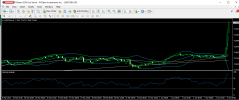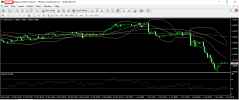
USD/CNH surges after Trump tariff announcement
Financial markets have been volatile since Trump’s tariff announcement. White House report says studies have repeatedly shown tariffs are an effective tool for achieving economic and strategic objectives
The report claims that in 2024, studies found that Trump’s tariffs strengthened the US economy and led to reshoring in sectors like manufacturing and steel production.
A 2023 report by the US International Trade Commission found that Trump’s tariffs reduced Chinese imports and stimulated more US production of affected goods.
According to the Economic Policy Institute, President Trump's tariffs during his first term “have shown no apparent correlation with inflation” and have had only a temporary impact on overall prices.
The White House report stated that the media's prediction was wrong, unlike what has been feared so far about high inflation.
Despite the positive report from the White House, according to the CME group's Fedwatch tool, the Fed at its May 7 meeting is still expected to maintain interest rates at 4.25%-4.50% with a probability level of 91.1%.
The dollar index (DXY), which tracks the USD against six major currencies, dropped, drawing a bearish candle with a low of 103.366, a high of 104.314, and a close of 103.802.
Today, investors will focus on US economic data on Unemployment Claims and PMI, which may get a market response.



